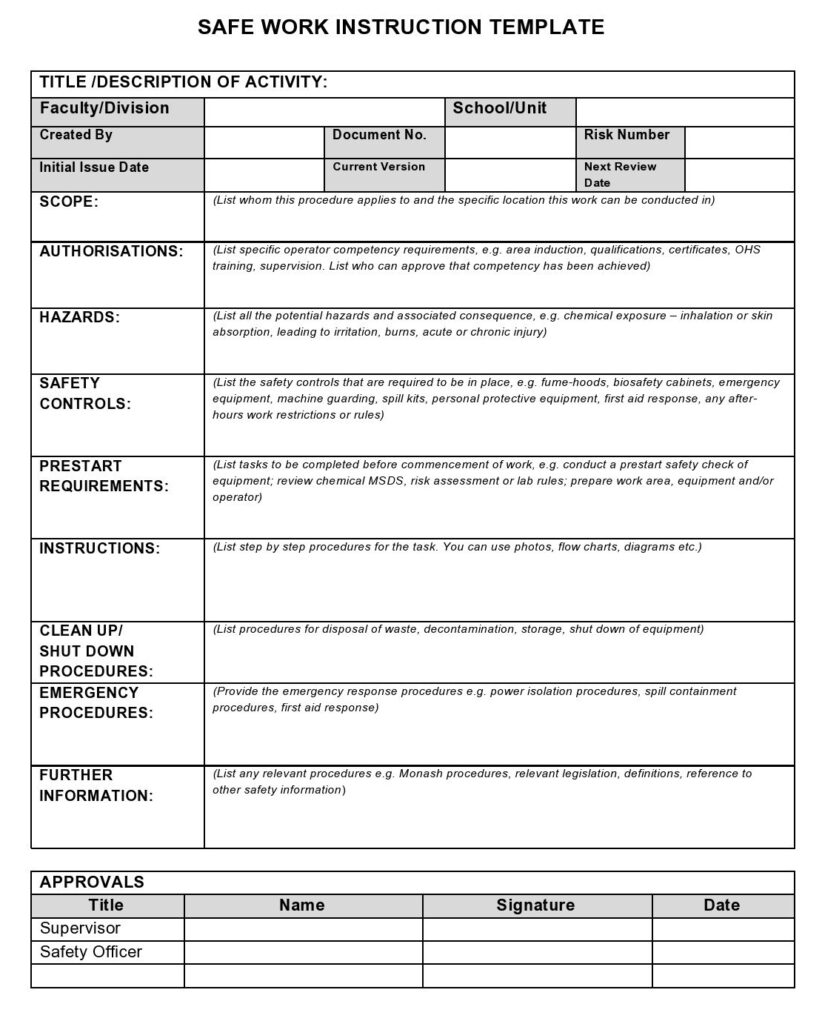In the fast-paced, high-stakes environment of the oil and gas industry, the importance of clear and precise work instructions cannot be overstated. With operations involving complex machinery, hazardous materials, and stringent regulatory requirements, having well-documented procedures is essential. Good work instructions not only ensure tasks are performed correctly and safely but also save time and prevent costly mistakes.
Before dive deep, lets understand what is work instruction in the oil and gas
A work instruction(WI) in the oil and gas industry is a detailed document that outlines the specific steps required to perform a task or operation safely and efficiently. These instructions are essential in this industry due to the complex, high-risk nature of the operations involved.
Creating effective work instructions requires a systematic approach. Here are some steps and tips to ensure your instructions are clear, concise, and comprehensive
- Understand the Task
- Define the Purpose and Scope
- Use a Standardized Format
- Write Clear and Concise Instructions
- Use Visual Aids
- Include Safety Precautions
- Detail Required Materials and Equipment
- Describe the Step-by-Step Process
- Assign Responsibilities
- Review and Test the Instructions.
- Regular Updates
Here’s how clear work instructions can transform your operations and reduce stress.
Table of Contents
ToggleMinimize Errors and Rework
Errors in the oil and gas industry can lead to significant financial losses and safety risks. Writing a clear work instructions helps minimize these errors by providing detailed, step-by-step guidance on how to perform tasks correctly the first time. This reduces the need for rework, which can be time-consuming and costly.
For example, In pipeline construction, detailed work instructions on assembling pipeline sections can prevent incorrect installations that might otherwise require disassembly and reassembly.
Improve Training and Onboarding
This industry often faces high turnover rates and the need to quickly bring new employees up to speed. Good work instructions are invaluable for training new hires, providing them with the knowledge they need to become productive more quickly.
Example: A new maintenance technician can refer to clear, concise instructions on how to inspect and service equipment, reducing the learning curve and minimizing the need for constant supervision.
Increase Consistency and Quality
Consistency is key in maintaining high-quality standards. Clear work instructions ensure that every task is performed in the same way, regardless of who is doing it. This consistency leads to a more reliable and high-quality output.
Example: In drilling operations, standardized procedures ensure that each step, from setting up the rig to drilling the well, is performed consistently, reducing the likelihood of errors and accidents.
Enhance Efficiency
Efficiency in operations means completing tasks faster and with fewer resources. Efficient instructions streamline workflows by eliminating confusion and guesswork, allowing employees to focus on the task at hand.
Example: In a refinery, precise instructions on operating complex machinery can significantly reduce downtime and increase throughput.
Ensure Compliance and Safety
The oil and gas industry are heavily regulated, with strict safety and compliance requirements. Detailed work instructions ensure that employees follow these regulations, reducing the risk of non-compliance and accidents.
Example: Clear safety protocols for handling hazardous materials ensure that workers follow the correct procedures, minimizing the risk of spills, fires, and other dangerous incidents.
Facilitate Problem-Solving
When problems arise, clear instructions provide a reference point for troubleshooting and corrective action. This helps in quickly identifying and resolving issues, minimizing downtime.
Example: If a pump fails, detailed maintenance instructions can help technicians diagnose and fix the issue more quickly, getting operations back on track with minimal disruption.
Reduce Dependence on Key Personnel
Relying heavily on a few key individuals for task knowledge can be risky. Clear work instructions mean that tasks are not dependent on individual knowledge, making it easier to cover absences and reducing the risk of knowledge loss.
If a senior engineer is on leave, others can perform their tasks using the detailed instructions left behind, ensuring continuity in operations.
Boost Employee Confidence and Morale
Knowing exactly how to perform tasks reduces stress and increases job satisfaction among employees. This boost in confidence leads to higher productivity and a more positive work environment.
Employees in a control room can handle operational tasks more confidently and effectively when they have clear guidelines and procedures to follow.

Conclusions
Work instructions in the oil and gas industry are critical for ensuring that tasks are performed safely, efficiently, and in compliance with regulatory requirements. They provide a clear, standardized approach to complex operations, minimizing the risk of errors and accidents. By investing in well-documented work instructions, organizations can enhance productivity, ensure safety, and maintain high-quality standards in their operations.

